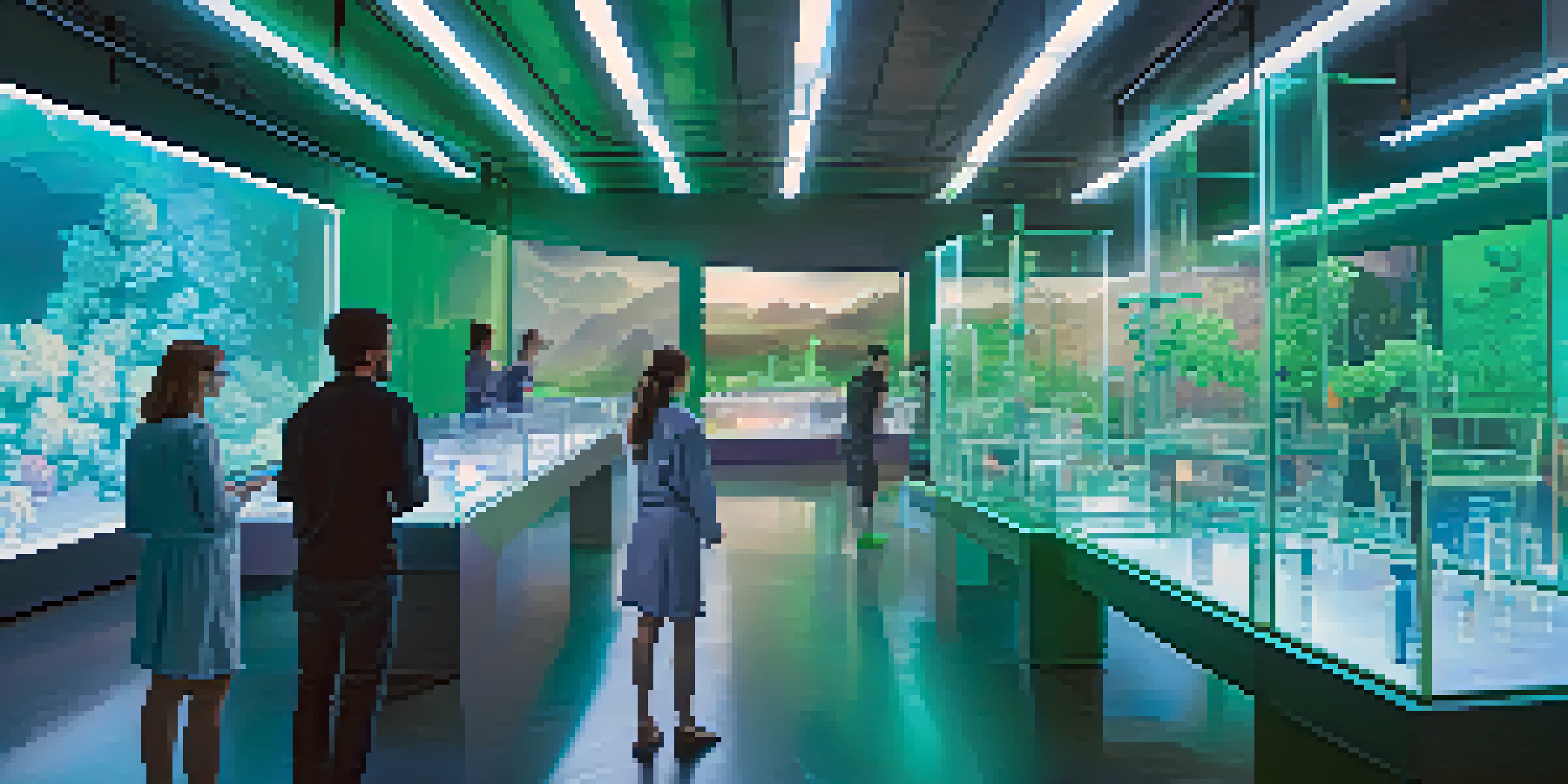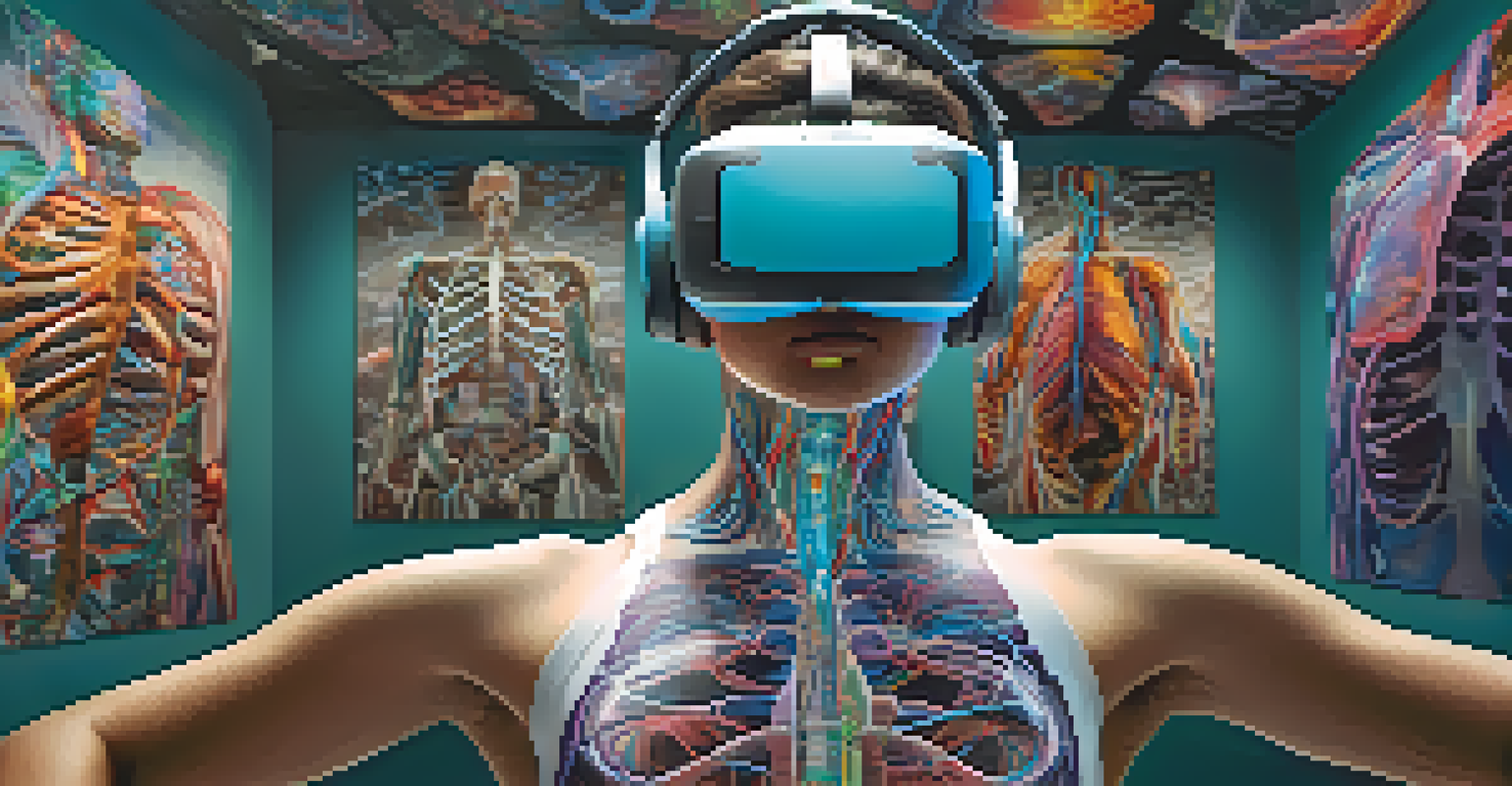Using Virtual Labs to Enhance STEM Learning Online

What Are Virtual Labs and Why They Matter
Virtual labs are online platforms that simulate real-world experiments, allowing students to engage with STEM subjects in a hands-on way. These labs can replicate complex scientific processes, making them an invaluable resource for remote learning. Unlike traditional classrooms, virtual labs provide students with flexibility and accessibility, breaking down geographical barriers to education.
Education is not the filling of a pail, but the lighting of a fire.
Imagine being able to mix chemicals or run physics experiments from your own home without the risks associated with physical labs. This not only enhances safety but also encourages students to experiment freely, fostering creativity and critical thinking. The ability to explore various scenarios without real-world consequences is a game changer, especially in subjects like chemistry and physics.
As education increasingly moves online, incorporating virtual labs becomes essential for maintaining student engagement. They offer interactive experiences that textbooks simply can't provide, making learning memorable and effective. By utilizing these tools, educators can create dynamic learning environments that cater to diverse learning styles.
The Benefits of Virtual Labs in STEM Education
One of the primary benefits of virtual labs is their ability to provide immediate feedback. Students can quickly see the results of their experiments and adjust their methods accordingly. This instant feedback loop is crucial for mastering concepts and encourages a deeper understanding of the material.

Additionally, virtual labs are often more cost-effective than traditional labs. Schools can save money on equipment, supplies, and maintenance while still providing high-quality learning experiences. This is particularly beneficial for underfunded programs that struggle to provide adequate resources for hands-on learning.
Virtual Labs Enhance Accessibility
Virtual labs break geographical barriers, providing students in remote areas or with disabilities the chance to engage in STEM learning.
Another significant advantage is accessibility. Students with disabilities or those living in remote areas can participate in STEM activities that might otherwise be out of reach. Virtual labs ensure that every learner has the opportunity to explore, discover, and innovate, regardless of their circumstances.
Enhancing Engagement Through Interactive Learning
Virtual labs captivate students' attention through interactive simulations and gamified learning experiences. By transforming complex concepts into engaging visual formats, they make learning enjoyable and relatable. For instance, students can explore the solar system or dive deep into cellular biology without ever leaving their screens.
The future belongs to those who believe in the beauty of their dreams.
The interactive nature of virtual labs also promotes collaboration among students. Many platforms allow users to work together on experiments, fostering teamwork and communication skills. This collaborative element encourages peer-to-peer learning, where students can share insights and learn from each other’s approaches.
Moreover, these labs often incorporate multimedia elements like videos, animations, and quizzes, making it easier for students to grasp challenging topics. This multisensory approach helps cater to different learning styles, ensuring that everyone can find a way to connect with the material.
Real-World Applications of Virtual Labs
Virtual labs bridge the gap between theoretical knowledge and practical application. Students can conduct experiments that mirror real-world scenarios, such as environmental testing or engineering design challenges. This hands-on experience translates into valuable skills that are applicable in future careers.
For example, aspiring engineers can use virtual labs to design and test structures under various conditions, while biology students can observe the effects of environmental changes on ecosystems. These simulations provide a safe space for students to experiment and learn from their mistakes, preparing them for real-life problem-solving.
Interactive Learning Boosts Engagement
The interactive and gamified nature of virtual labs captivates students, turning complex concepts into enjoyable and relatable experiences.
As industries continue to evolve, the skills gained from virtual labs become increasingly relevant. Students who engage with these tools are better equipped to enter the workforce, as they have already practiced applying their knowledge in realistic settings. This alignment with industry needs makes virtual labs an essential component of modern STEM education.
Challenges and Limitations of Virtual Labs
Despite their numerous benefits, virtual labs do have some challenges. One major concern is the lack of hands-on experience with physical tools and materials. While simulations can mimic many aspects of real labs, they can't fully replicate the tactile experience of working with equipment.
Another limitation is the reliance on technology, which can create barriers for students without reliable internet access or modern devices. This digital divide may hinder equal participation in STEM education, making it crucial for educators to find ways to bridge this gap.
Additionally, some students may struggle with self-directed learning that virtual labs often require. Without the structure of a traditional classroom, some learners may find it challenging to stay motivated. Addressing these challenges is essential to maximize the effectiveness of virtual labs in enhancing STEM learning.
Integrating Virtual Labs into the Curriculum
To effectively incorporate virtual labs into the curriculum, educators must align these tools with their learning objectives. This means selecting labs that complement the topics being taught and providing clear guidance on how to use them effectively. By integrating virtual labs seamlessly into lessons, teachers can enhance the overall learning experience.
Professional development for educators is also vital. Training teachers to utilize virtual labs ensures they feel confident and competent in guiding students through these platforms. When teachers are well-prepared, they can better facilitate discussions and reflections on the experiments conducted.
Real-World Skills Through Simulations
Virtual labs offer practical applications of theoretical knowledge, equipping students with relevant skills for future careers in STEM fields.
Moreover, collaboration among educators can lead to innovative ways to implement virtual labs across disciplines. For example, a biology teacher might partner with a physics teacher to create interdisciplinary projects that showcase how different scientific principles intersect. This collaborative approach enriches the educational experience and inspires students to see the connections between various fields.
The Future of STEM Learning with Virtual Labs
As technology continues to advance, the future of STEM learning with virtual labs looks promising. Emerging trends like augmented reality (AR) and virtual reality (VR) are set to revolutionize how students interact with scientific concepts. Imagine donning a VR headset and exploring the human body or conducting chemistry experiments in a 3D environment!
These innovations not only enhance engagement but also provide unique opportunities for experiential learning. The more immersive the experience, the more likely students are to retain information and develop a passion for STEM subjects. This potential for deeper learning is what makes virtual labs an exciting area for future educational development.

Ultimately, as we embrace these technological advancements, the goal remains the same: to inspire and equip the next generation of scientists, engineers, and innovators. By leveraging the power of virtual labs, we can create a dynamic learning environment that empowers students to explore, experiment, and excel in STEM.